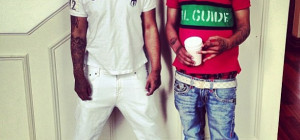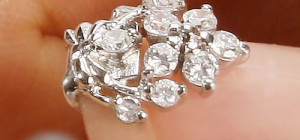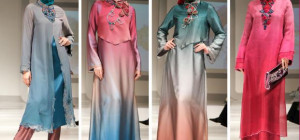No one says no to t-shirts. Long sleeves, short sleeves, cropped, printed – they come in a lot of varieties and we all own at least one. For apparel stores, t-shirts present an opportunity to stand out, with the garment’s canvas wide open to get creative. For them, it isn’t just about the type of t-shirts they sell but what’s ‘on’ the t-shirts they sell. With so many t-shirt designs on the market, it can be quite a challenge to come up with creative designs that stand out.
This blog is meant to help with just that so you can come up with your own stellar t-shirt designs in 2024.

Designs For The Win
There are a couple of things you should pay attention to when starting your t-shirt design. And it begins with the quality of the t-shirts you purchase. When purchasing wholesale long sleeve shirts or regular tees, make sure they are from reputed brands that promise high customizability. And then comes the first tip of this blog.
Quality of the Image
Successful t-shirt designs start with a high-quality image. The image should have a high resolution so the final print doesn’t look blurred or pixelated. Fine details matter. Set up your designs with at least 300 DPI (dots per inch). However, the image’s size may vary based on the printing technique you employ.
Keep these in mind.
- Saving your designs in a vector file format (PDF, SVG, EPS etc.) so the designs scale to print to any size without compromising its quality.
- Judiciously use graphics design software for design modification and resolution adjustments, be it free or paid.
- If the design is a photo, scan it at the highest resolution.
- If the photo is of low-quality, consider going for a distressed design so the design naturally appears rugged on the shirt.
Make It Easier For The Lookers
When customizing a t-shirt, you tend to look up close on how the design actually looks. But have you considered that people may only look at it for a shorter time and not too closely? When you have a lot of things stacked up on the design, supposedly to tell a story or convey a message, it might overwhelm anyone who looks at it. They may very well miss the message. It’s better to keep it simple and neat. Just zoom out the design in the design software you use to check how it would look from afar. Then, if necessary, fine tune the design to make it easier for people who will be looking at it from a distance.
Choose The Right Colors
Let’s get this straight. Your designs can never be eye-catching and appealing if the colors aren’t right. Period. And the choice of colors also impacts the budget. The more the colors, the higher the cost for printing. On the other hand, colors are not just limited to aesthetics. They can convey messages, because every color has a characteristic attributed to them. That’s why it’s important to not use too many colors that could potentially overwhelm the lookers. Moreover, using too many colors also makes it difficult for wearers to combine the t-shirts with other clothing they already own.
So the solution? Finding a balance. The design colors must go well with the t-shirt colors. You can start by researching a bit of color theory. You know, red representing love, blood or strong and intense emotions. Purple representing royalty or nobility, wealth and ambition. Green representing nature, peace and growth. The right colors can convey the tone of your design’s message or purpose perfectly.
That brings us to the next tip.

Contrast
Contrast simply means how different the lighter and darker parts are in your design. For example, if the t-shirt is jet black, designs of bright colors can be considered high contrast. You want your designs to distinctly stand out. High contrast or low contrast boils down to personal preference and what your audience likes more. If it’s subtlety you need, low contrast should be your choice. If you prioritize readability and clarity even from a distance, high contrast is the way to go.
T-Shirt Material
Hold your horses before you purchase bulk long sleeve shirts and tees for customizing. You have to choose the fabric carefully considering the design you have in mind. Choose a material that complements the design, maintains visual appeal after washing, and enhances the wearer’s experience for customer satisfaction.
Different fabrics have different characteristics that affect the design:
- Cotton is soft, breathable, and absorbent for a comfortable fit but complex designs may not be as vibrant.
- Polyester has persistence, quick-drying, and vibrant colors but may not be as cozy or breathable.
- Blends like cotton-polyester or tri-blend offer a balance of softness, durability, and sometimes a vintage look.
- Bamboo fabric is eco-friendly, soft, quick-drying, and breathable for sustainable, comfy t-shirts.
Consider the fabric characteristics to choose the right material for your t-shirt design and printing needs.
Printing Technique
Just make sure you choose the right printing technique based on the fabric of your t-shirts.
- Screen printing works well on cotton and cotton-polyester blends because the ink penetrates the fabric for vibrant, long-lasting prints.
- Direct-to-garment (DTG) printing is versatile for many fabrics, but brings excellent results on 100% cotton as the ink absorbs into the fibers.
- Heat transfer can be used on most fabrics, but it’s important to choose a material that can withstand the heat and pressure without compromising quality.
Drive your venture towards success with creativity, knowledge, and patience. If you can follow these tips and keep researching, you can definitely come up with designs to set your brand apart in the market.







